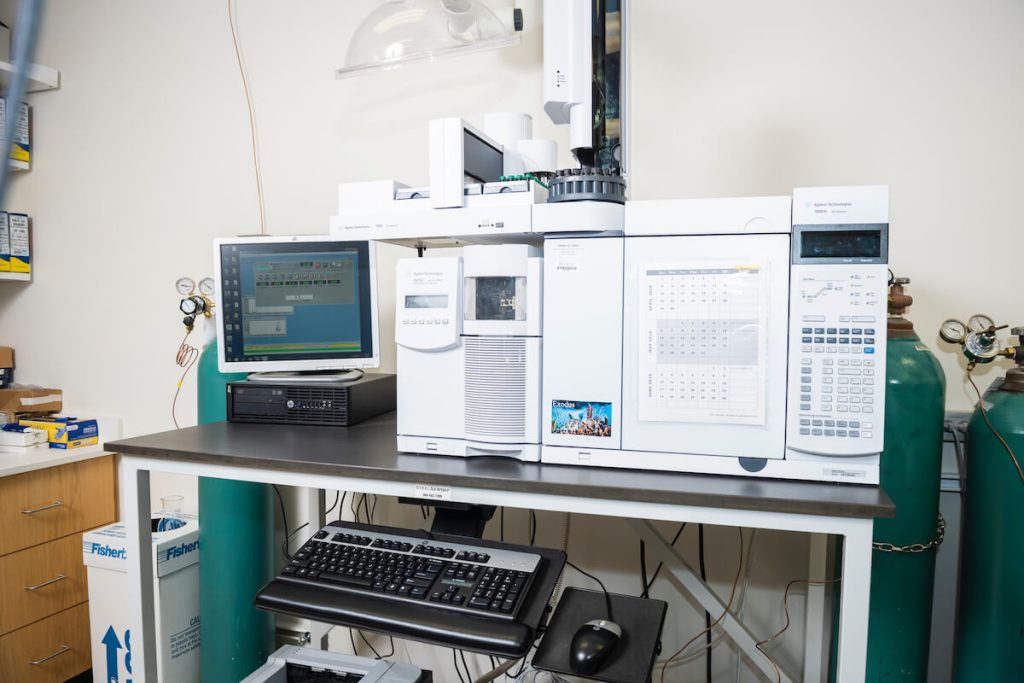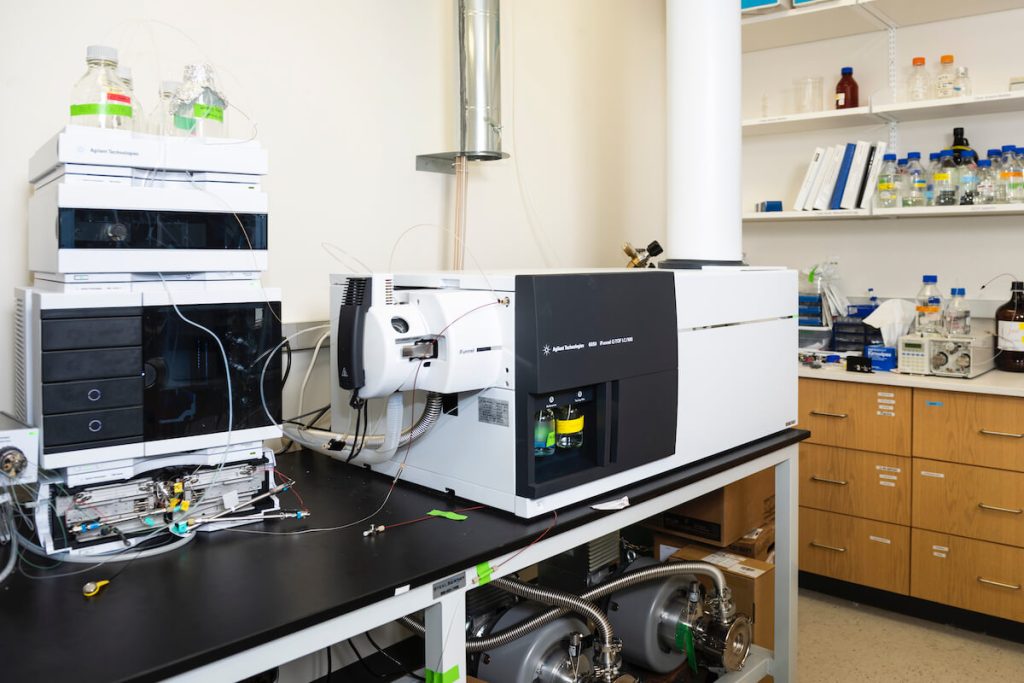Most biological processes, including energy production, growth, waste disposal, and gene expression, require proper control of metabolism. Normal tissue function and development cannot occur without precise control of metabolism, and as a result, many diseases involve perturbed metabolism at the cellular level. Such diseases include inborn errors of metabolism caused by inherited mutations in metabolic enzymes and more common multifactorial diseases like cancer, diabetes, and cardiovascular disease.
Our facility uses an array of techniques to assess metabolism.

Isotope Enrichment Analysis
These techniques involve the introduction of a nutrient labeled with a stable isotope (e.g. 13C, 15N, 2H) into a biological system, followed by measurement of isotope enrichment in metabolites downstream of the labeled nutrient tracer to assess the flow through metabolic pathways. The choice of instrument depends on the metabolites to be analyzed. Facility personnel are available to assist in study design.
Targeted Metabolomics Analysis
These assays use tailored mass spectrometry approaches to assess the levels of specific metabolites pre-chosen by the user or the facility. These may include single metabolites for absolute quantitation (metabolite quant), several metabolites chosen to assess a single pathway (pathway analysis), or screening analysis using assays developed by the facility to detect hundreds of metabolites simultaneously. Screening analyses are the most commonly requested assays. These assays include a full scan instrument method designed to monitor ~600 metabolites with optimized sensitivity and a broader assay on high-resolution mass spectrometry that routinely detects several hundred metabolites. Facility personnel are available to assist in choosing the assay that best meets the experimental question.
Untargeted Metabolomics Analysis
This is a shotgun-like approach that acquires all possible metabolite data from experimental samples with no prioritization of which pathways might be informative. The method reports the maximum number of metabolic features (i.e., “peaks”) and identifies as many of these as possible by comparing the precise molecular mass and MS2 spectra to commercial databases.
Seahorse Assay
This technique measures oxygen consumption and extracellular acidification in a 96-well format from a variety of sample types, including cultured cells and isolated mitochondria.
Gas Chromatography

Liquid Chromatography

Other Instrumentation
© 2025 Children’s Research Institute Dallas Texas | Privacy | Site Policies